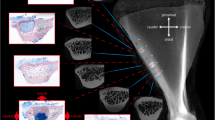Abstract
In vivo studies using the animals are helpful in developing the treatment strategies as they are important link between the successful in vitro testing and safe human use. Various research projects in the field of fixation of fractures, development of newer biomaterials, chemotherapeutic drugs, use of stem cells in nonunion of fractures and cartilage defects etc., have hugely depended on animal experimentation. The employment of animals in experiments is both scientific and ethical issue. There must be reasonable reasons to show that it will significantly advance the present knowledge and lead to improvement in care. The regulatory bodies exist for humane use and care of animals used for experiments e.g., International Council for Laboratory Animal Science, Council for International Organizations of Medical Sciences, International Union of Biological Sciences, International Committee on Laboratory Animals. In India, Indian National Science Academy, Indian Council of Medical Research, National Centre for Laboratory Animal Sciences promote high standards of laboratory animal quality, care and health. The Committee for the Purpose of Control and Supervision on Experiments on Animals guidelines are well defined and is a must read document for any one interested to carry out research with animal facilities.
Similar content being viewed by others
References
The use of non-human animals in research: A guide for scientists. The Royal Society, 2004, page 1. Available from: http://www.royalsociety.org. [last accessed on 2012 July 22].
Science, Medicine and Animals; a report from Institute for Laboratory Animal Research. Washington USA: National Academies Press; 2004. p. 1–2.
Pearce AI, Richards RG, Milz S, Schneider E, Pearce SG. Animal models for implant biomaterial research in bone: A review. Eur Cell Mater 2007;13:1–10.
An YH, Friedman RJ. Animal selections in orthopaedic research. In: An YH, Friedman RJ, editors. Animal Models in Orthopaedic Research. Boca Raton, FL: CRC Press; 1999. p. 39.
Use of Animals in Scientific Research. 2000. Available from: http://icmr.nic.in. [Last accessed on 2012 July 13].
An YH, Friedman RJ. Animal models of articular cartilage defect. In: An YH, Friedman RJ, editors. Animal Models in Orthopaedic Research. Boca Raton, FL: CRC Press; 1999. p. 309.
Lu L, Jabbari E, Moore MJ, Yaszemski MJ. Animal models for evaluation of tissue-engineered orthopedic implants. In: Bronzino JD, editor. Tissue engineering and artificial organs. 3rd ed. Boca Raton FL: CRC press; 2006. p. 45.1 to 45.9.
Roy TD, Simon LJ, Ricci JL, Rekow ED, Thompson VP, Parsons JR. Performance of degradable composite bone repair products made via three dimensional fabrication techniques. J Biomed Mater Res A 2003;66:283–91.
Wakitani S, Goto T, Young RG, Mansour JM, Goldberg VM, Caplan AI. Repair of large full-thickness articular cartilage defects with allograft articular chondrocytes embedded in a collagen gel. Tissue Eng 1998;4:429–44.
Carpenter JE, Hankenson KD. Animal models of tendon and ligament injuries for tissue engineering applications. Biomaterials 2004;25:1715–22.
Boden SD. Biology of lumbar spine fusion and use of bone graft substitutes: Present, future, and next generation. Tissue Eng 2000;6:383–99.
An Y, Friedman RJ, Parent T, Draughn RA. Production of a standard closed fracture in the rat tibia. J Orthop Trauma 1994;8:111–5.
Peter SJ, Miller ST, Zhu G, Yasko AW, Mikos AG. In vivo degradation of a poly (propylene fumarate)/beta-tricalcium phosphate injectable composite scaffold. J Biomed Mater Res 1998;41:1–7.
Yasko AW, Lane JM, Fellinger EJ, Rosen V, Wozney JM, Wang EA. The healing of segmental bone defects, induced by recombinant human bone morphogenetic protein (rhBMP-2). A radiographic, histological, and biomechanical study in rats. J Bone Joint Surg Am 1992;74:659–70.
Miyazawa K, Kawai T, Urist MR. Bone morphogenetic protein-induced heterotopic bone in osteopetrosis. Clin Orthop Relat Res 1996;324:259–68.
Paige KT, Cima LG, Yaremchuk MJ, Schloo BL, Vacanti JP, Vacanti CA. De novo cartilage generation using calcium alginate-chondrocyte constructs. Plast Reconstr Surg 1996;97:168–78.
International Council for Laboratory Animal Science (ICLAS). Available from: http://www.iclas.org. [Last accessed on 2012 July 13].
Ministry of social justice and empowerment Notification No.S.O.168(E) dated 18 Feb 2000 and S.O.134(E) dated 15 Feb 2001. New Delhi: 2001.
CPCSEA (Committee for the Purpose of Control and Supervision on Experiments on Animals). Guidelines for Laboratory Animal Facility. Available from: http://www.cpcsea.com. [last accessed on 2012 July22].
Russell WM, Burch RL. The Principles of Humane Experimental Technique. London, UK: Methuen; 1959.
Krishna SC. Animal testing in India. Lancet 2001:357:885–6.
Author information
Authors and Affiliations
Corresponding author
Rights and permissions
About this article
Cite this article
Saraf, S.K., Kumaraswamy, V. Basic research: Issues with animal experimentations. IJOO 47, 6–9 (2013). https://doi.org/10.4103/0019-5413.106882
Published:
Issue Date:
DOI: https://doi.org/10.4103/0019-5413.106882




